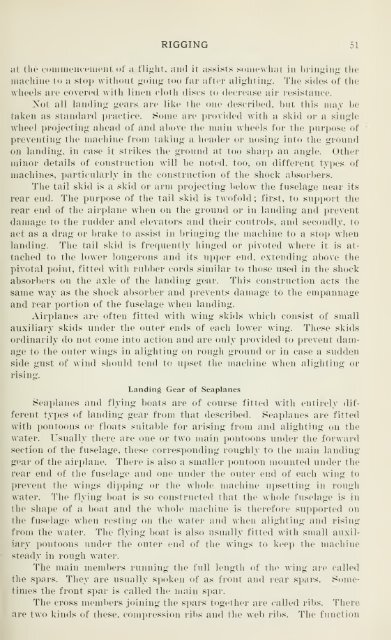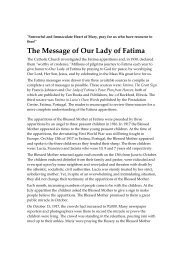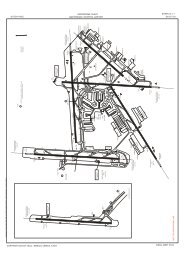Applied aeronautics; the airplane - Beeldbibliotheek
Applied aeronautics; the airplane - Beeldbibliotheek
Applied aeronautics; the airplane - Beeldbibliotheek
- No tags were found...
Create successful ePaper yourself
Turn your PDF publications into a flip-book with our unique Google optimized e-Paper software.
RIGGING 51at <strong>the</strong> eoinineueeiuoiil of a flij;lit, aud it assists soiiicw hat in briii^iiii^- <strong>the</strong>machine to a stop without going too far after aligliting. The sides of <strong>the</strong>wheels are covered with linen cloth discs to decrease air resistance.Not all landing gears are like <strong>the</strong> one described, but this may betaken as standard practice. Some are provided with a skid or a singlewheel projecting ahead of and above <strong>the</strong> main wheels for <strong>the</strong> purpose ofpreventing <strong>the</strong> machine from taking a header or nosing into <strong>the</strong> groundon landing, in case it strikes <strong>the</strong> ground at too sharp an angle. O<strong>the</strong>rminor details of construction will be noted, too, on different types ofnmchines, particularly in <strong>the</strong> construction of <strong>the</strong> shock absorbers.The tail skid is a skid or arm projecting below <strong>the</strong> fuselage near- itsrear end. The purpose of <strong>the</strong> tail skid is twofold; first, to support <strong>the</strong>rear end of <strong>the</strong> <strong>airplane</strong> when on <strong>the</strong> ground or in landing and preventdamage to <strong>the</strong> rudder and elevators and <strong>the</strong>ir controls, and secondly, toact as a drag or brake to assist in bringing <strong>the</strong> machine to a stop whenlanding. The tail skid is frequently hinged or pivoted where it is attachedto <strong>the</strong> lower longerons and its upper end, extending above <strong>the</strong>pivotal point, fitted with rubber cords similar to those used in <strong>the</strong> shockabsorbers on <strong>the</strong> axle of <strong>the</strong> landing gear. This construction acts <strong>the</strong>same way as <strong>the</strong> shock absorber and prevents damage to <strong>the</strong> empaunageand rear portion of <strong>the</strong> fuselage when landing.Airplanes are often fitted with wing skids which consist of smallauxiliary skids under <strong>the</strong> outer ends of each lower wing. These skidsordinarih' do not come into action and are only provided to prevent damageto <strong>the</strong> outer wings in alighting on rough ground or in case a suddenside gust of wind should tend to upset <strong>the</strong> machine when alighting orrising.Landing Gear ofSeaplanesSeaplanes and flying boats are of course fitted with entirely differenttypes of landing gear from that described. Seaplanes are fittedwith pontoons or floats suitable for arising from and alighting on <strong>the</strong>water. Usually tliere are one or two main pontoons under <strong>the</strong> forwardsection of <strong>the</strong> fuselage, <strong>the</strong>se corresponding roughly to <strong>the</strong> main landinggearof <strong>the</strong> <strong>airplane</strong>. There is also a smaller pontoon mounted under <strong>the</strong>rear end of <strong>the</strong> fuselage and one under <strong>the</strong> outer end of each wing toprevent <strong>the</strong> wings dipping or <strong>the</strong> whole machine upsetting in roughwater. The flying boat is so constructed that <strong>the</strong> whole fuselage is in<strong>the</strong> shape of a boat and <strong>the</strong> whole macliine is <strong>the</strong>refore supported ontlie fuselage when resting on <strong>the</strong> water and when alighting and risingfrom <strong>the</strong> water. The flying boat is also usually fitted with small auxiliarypontoons under <strong>the</strong> outer end of <strong>the</strong> wings to keep <strong>the</strong> machinesteady in rough water.The main members running <strong>the</strong> full length of <strong>the</strong> wing are called<strong>the</strong> spars. They are usually spoken of as front and rear spars. Sometimes<strong>the</strong> front spar is called <strong>the</strong> main spar.The cross members joining <strong>the</strong> spars toge<strong>the</strong>r are called ribs. Thereare two kinds of <strong>the</strong>se, compression ribs and <strong>the</strong> web ribs. The function












